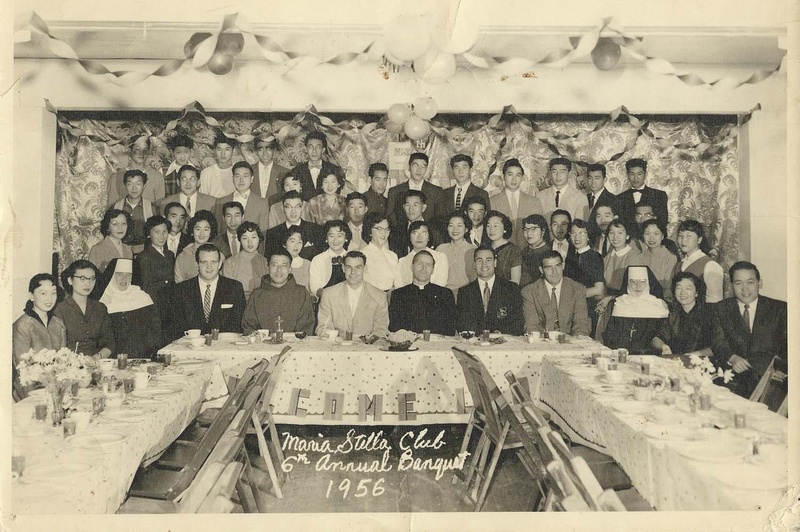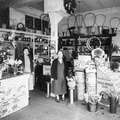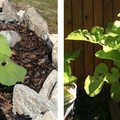Discover Nikkei published my article titled, You Are Canadian Nisei If . . . on December 9, 2015. There were more Nisei traits uncovered to add to this article. I wonder if there are any more hidden gems regarding Canadian Nisei identity?
- Mothers always placed their brooms at the corner of the front door on the porch. It was a daily routine to sweep the floor.
- Every Saturday was wash day in the fifties and sixties. Mothers hung sheets, underwear and shirts on the clothesline. One unique observation that kids made was when 7-day panties were in vogue back then, so they checked to see if there was a day missing. Sunday, Monday, Tuesday...
- They may use benjo for toilet and in extreme cases, chozu-ba.
- There’s a soft, round biscuit called Mi-ru-ku bo-oro. In Japanese, it means ‘milk ball.’ To the Nisei it was called chi-chi boru or nipple ball.
- Nisei most likely smoked when they were younger. If you see old movies, most actors had cigarettes between their fingers. Some Nisei can take a match cover and light it with one hand. Another trick was to scrape the wooden match on the zipper or light it by striking the match on the butt of their jeans. Children loved seeing ‘smoke rings’ when exhaled by the smoker and they would put their finger inside the ring. Little did the children know that it was second-hand smoke! Whenever you see short, narrow, dark streaks on the unpainted wooden shiplaps, they’re wooden match strike marks.
- Nisei children collected match covers from out of town, provinces or states. Sticky Popsicle coupons were saved to earn prizes.
- Most have seen the movie, Go For Broke with Van Johnson and Henry Nakamura and they all laughed out loud when Van Johnson made up the password bakatare.
- They know all the Japanese actors who were in Hollywood movies in the fifties, like Miyoshi Umeki who won an Oscar for best supporting actress in the movie Sayonara, and Kyo Machiko, who was in the movie Tea house of the August Moon with Marlon Brando and Glen Ford. It was rare back in those days to have Japanese performers in Hollywood movies.
- Most Nisei know Japanese American actors like James Shigeta, Nobu McCarthy, Pat Suzuki, George Takei, Sessue Hayakawa, Jack Soo (Goro Suzuki) and Pat Morita. One Canadian actor from Vancouver and Winnipeg is Robert Ito. He started off as a tap dancer on Powell Street. Ms. McCarthy’s parents lived in Ottawa.
- Most Nisei men owned a fedora hat.
- Most Nisei are familiar with the famous Asahi baseball teams that played on Powell Grounds, now Oppenheimer Park. There were many stars on the team. In 2003, they were inducted into the Canadian Baseball Hall of Fame and in 2005, the B.C. Sports Hall of Fame. They also followed Nippon baseball when the Giants came for exhibition games to Vancouver. Players like Eiji Sawamura, Shigeo Nagashima, Sadaharu Oh and Victor Safin were their heroes, as well as their local stars.
- Younger Nisei know what these things are: hush puppies (suede shoes), oxford (girls’ shoes), penny loafers (shoes where you can put a penny in the slot), crinoline (device that made the skirt flair out), falsies (early version of saline or silicon breast enhancement), drapes or strides (men’s baggy pants) and what about pedal pushers? It was short pants for girls that came just below the knees to prevent the leg part of the pants from getting caught on the bicycle chain. They’re called capris now.
- Older Nisei ladies had their hair permed at the beauty salon and it always came out chiri-chiri or very tight curls. They had white powder on their face with rouge make-up on their cheeks and bright red lipstick. They came out looking oh so generic! The younger Nisei girls went to their friend’s place to perm each other’s hair. The solution was very hard on the eyes and nose. Most likely, the perm was made with a product called ‘Bobbi’. Is that where the term bobby pins come from? There was 'Pin Quick' and ‘Toni’ as well, but the latter was very popular in Greenwood. The red lipstick was more paste-like, so they had to apply it regularly. It was common to see ladies applying lipsticks in restaurants.
- Most Nisei would rather have spaghetti and meatballs on hot rice instead of vermicelli noodles. Pakkui was another Chinese fusion ‘Sweet and Sour’ that made it uniquely Nisei. Dried, salted broad beans were called he-no-ma-me (fart beans).
- Another traditional cuisine that is favoured by Nisei is Okai-san or Okai-yu. Cha-gai imo was very tasty. Yam or sweet potato was used to add more flavour. Left-over rice is used for this dish and ichi-nen ja (green tea) to make it soup-like. Sato-zuke (sweetened salmon) or smoked herring go hand in hand with okai-san as well as Iwa nori and tsukenmono.
- To many Nisei, matsutake tori is a treasure hunt. It’s TOP SECRET!
- Nisei guests invited for dinner will invariably bring omiage or gift to the host. The host will tell them not to bring anything, yet a Nisei will bring something.
- When Nisei couple is driving, just by chance, near their acquaintance’s place, they will say, “Let’s not drop in. We don’t have any omiage.”
- Nisei friends will fight over the bill at a restaurant and by the time the winner goes to the till, it’s ripped in pieces! A cheapskate (ke-chi) will slip away to the washroom while others are fighting over the bill.
- Nisei will never pick the last piece of dessert like manju on the plate. When everyone does the same thing, one guest will reluctantly say, “Since no one’s going to eat the last manju, I think I will. It’s mottainai.”
- When a child is asked to deliver an item for mom, she will emphasize that he or she should not take money from the receiver. A child knocks on the door to deliver the ‘gift’ and the lady offers a quarter. This child will not put his/her hands in the pockets, instead will turn his/her shoulder around and say ‘no’ about three times. The lady will slip a quarter in the child’s pocket. Smart kid! Another child will do the same, except he’ll stick out his hand at the last minute and say, “Thank you, obasan!”
- In their will, Nisei parents will decline koden and flowers. They know how difficult it is to ‘repay’ the donors who gave koden. Back in the old days, it was difficult for a family to finance a funeral, so the villagers would help out with koden. Most Nikkei families are comfortable financially, therefore, koden is not necessary.
- For many Nisei women, an apron was a big part of their accessories.
- Enryo is a very important word to a Nisei. The closest meaning I can come up with is: to refrain from being too assertive. The opposite is enryo-nashi. Some say enjo-nashi. To maintain harmony with each other is to observe enryo. Try to refrain from accepting too many things from a friend even though he or she is willing to offer. For example, do not drink excessively even though it’s offered to you. Just say ‘no, that’s enough.’ Also do not ask too many favours to your friends.
- O-kae-shi is another word that is familiar to Nisei. Alan Mayeda told me that when his mother received home-baked pie from a friend, she returned the empty Pyrex pie plate with a box of matches or toothpicks with the plate. I remember delivering bags of sugar on my wagon to those who sent gifts when mom was in the hospital.
- In most Issei/Nisei homes, you can smell incense. They will have a ho-to-ke-sama (Buddhist altar) to give offerings to the loved ones who passed away.
- Visitors can guess how many people are in the house when they walk into the gen-kan (foyer). There will be rows of shoes lined neatly against the wall.
- While dating and ‘going steady’, a Nisei young man will open the car door for his girlfriend and cater to her needs. Once they get married, the husband at dinner time, will stick his arm out with an empty bowl of rice, without saying a word. However, in this day and age, he won’t get very far!
- Older Nisei’s famous last words? “This will be my last new car.”
*This article was originally published by The Bulletin: a journal of Japanese Canadian community, history + culture, October 2016 issue.
© 2016 Chuck Tasaka






